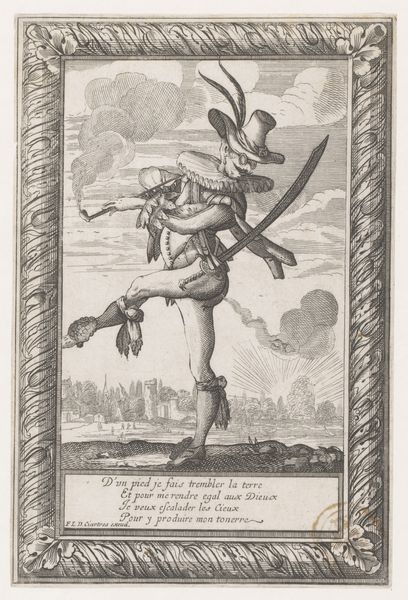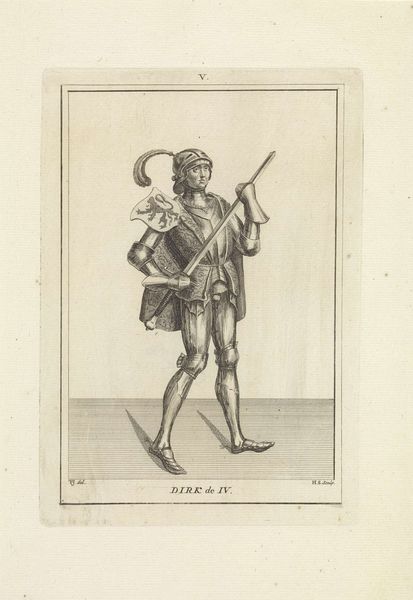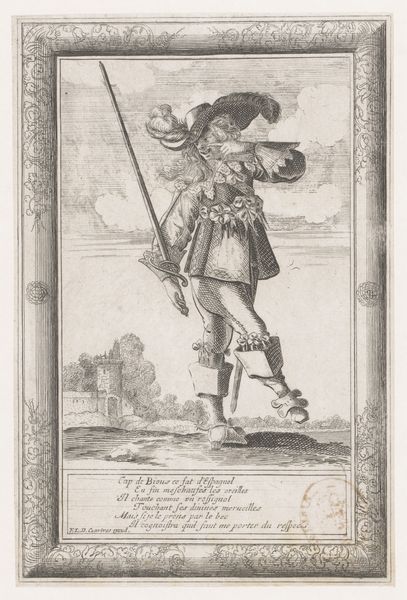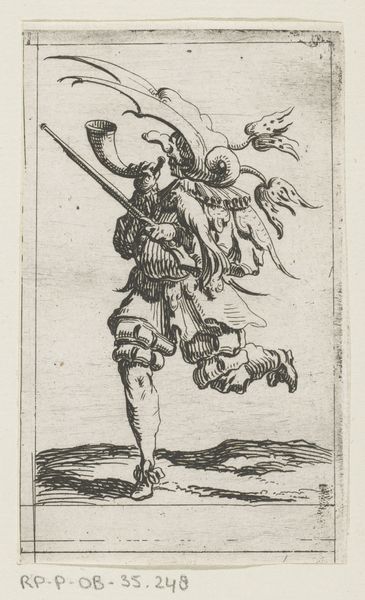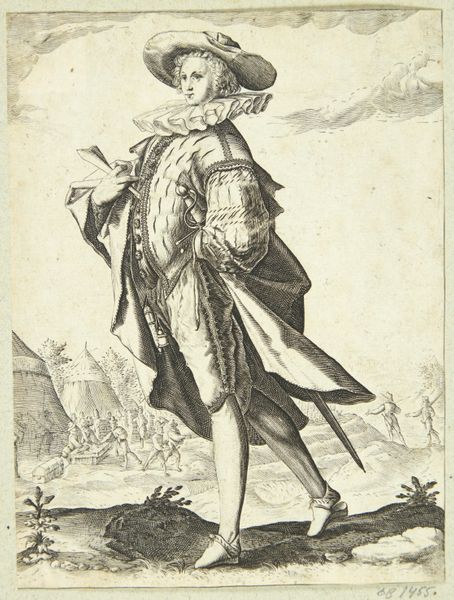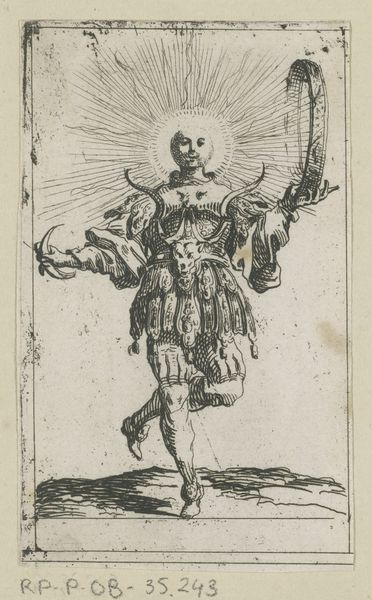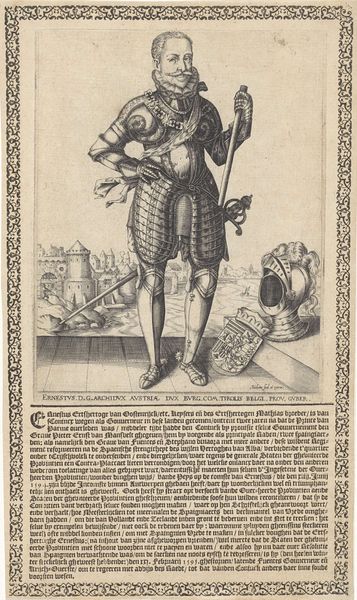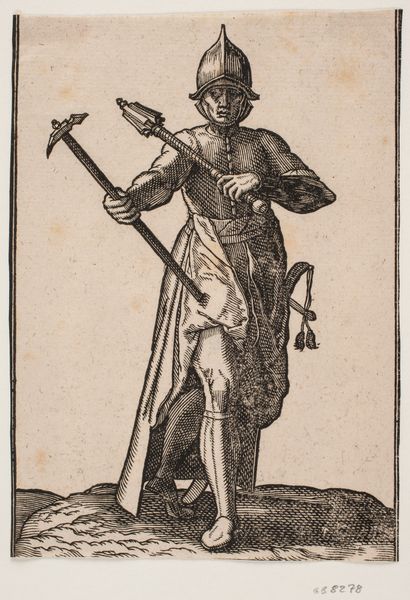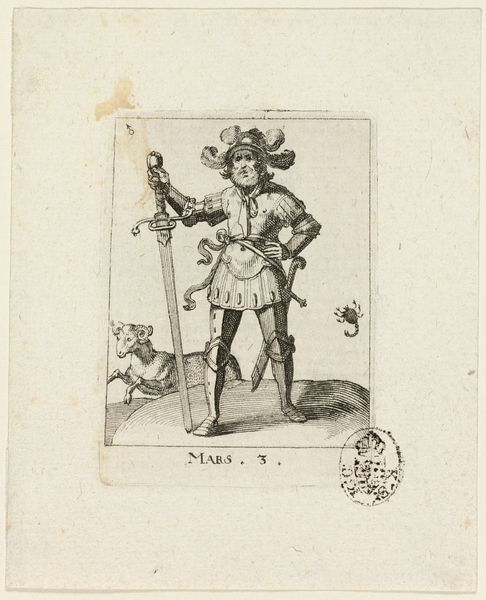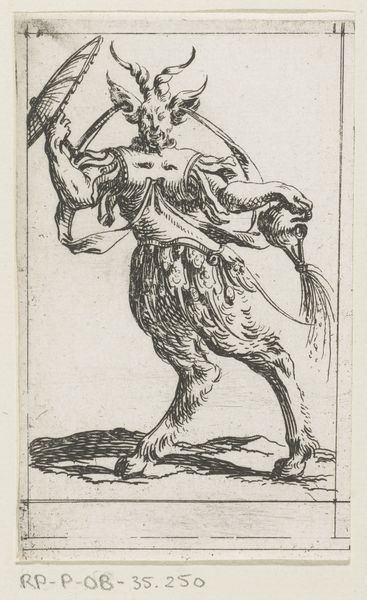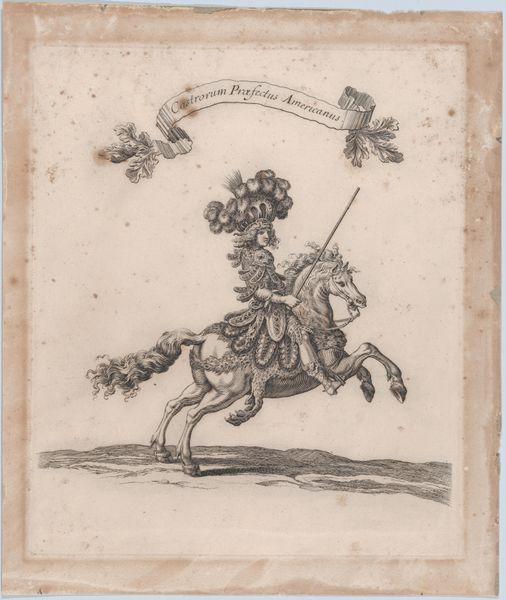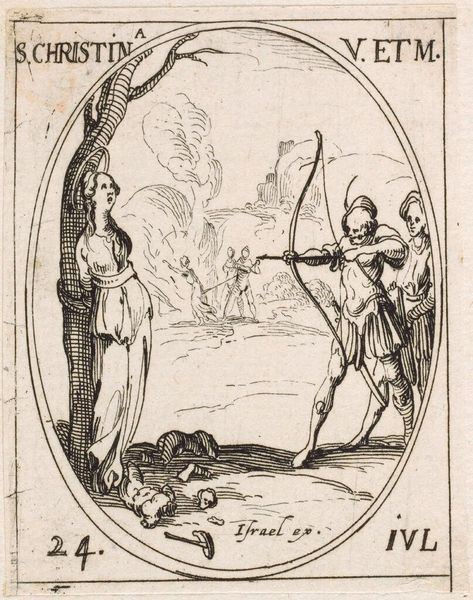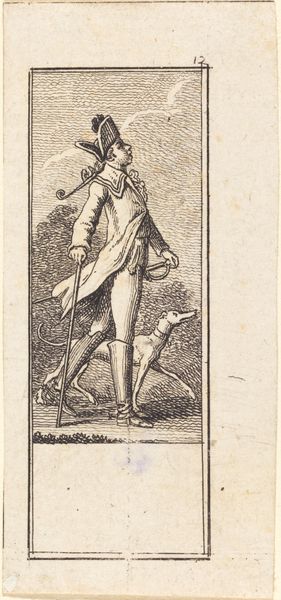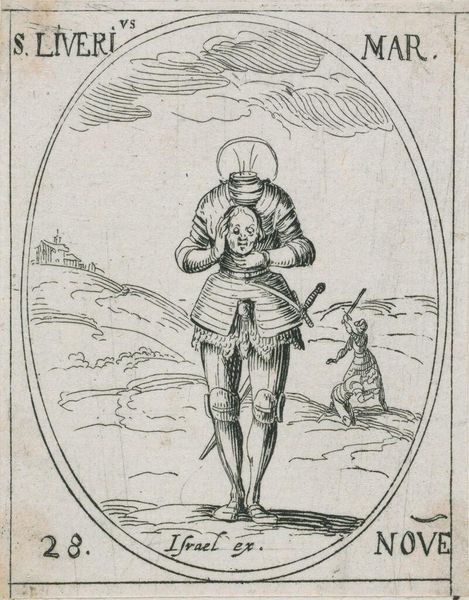
graphic-art, print, paper, engraving
#
portrait
#
graphic-art
# print
#
old engraving style
#
paper
#
line
#
engraving
Dimensions: height 89 mm, width 55 mm
Copyright: Rijks Museum: Open Domain
Curator: Here we have "Vrouw uit Florida," or "Woman from Florida," an engraving by Stefano della Bella, dating roughly from 1620 to 1664. It's part of the Rijksmuseum's collection. Editor: It strikes me as a curious image, this figure with the bow. There's an elegance in the lines, but also an unmistakable...distance, an exoticization, I suppose? Curator: Exactly. Della Bella, though Florentine, worked for powerful European courts, including the Medici and the French monarchy. He was essentially producing images that supported certain colonial narratives and understandings of power. Editor: And how does that manifest itself materially in this print? The details are so sharp, yet the representation feels... removed from any real, lived experience. Curator: Well, notice how the figure is adorned, or rather, costumed. The "clothing" seems more theatrical than functional. It reinforces a visual trope popular at the time; the indigenous population viewed through a lens of European preconceptions and desires. This engraving was never intended as an ethnographic study. Editor: The labor that goes into something like this – the cutting, the printing, the circulation of the image. All reinforcing a dominant worldview, turning a real woman into a symbol, a thing. How was an image like this consumed? Curator: This type of print would likely have circulated among elite collectors, perhaps within scientific circles or courtly environments, and these images often played a role in justifying colonial expansion by solidifying narratives of superiority. Prints were a way to both record and shape history for the consuming public. Editor: And how do we grapple with this historical reality now, knowing the violence and dispossession it facilitated? How do we consume it, differently? Curator: We have to analyze these images critically, understand them as documents embedded within specific power structures. Seeing this work involves understanding the intent of its maker and its audience. The image, while aesthetically pleasing, must also provoke critical engagement, particularly given the historical and political circumstances. Editor: It really brings to light how something seemingly small, like a print, can be deeply embedded in much larger networks of power and production. Thank you, that gave me a lot to consider. Curator: And, in turn, examining it from your material perspective really shows us how to peel back those layers.
Comments
No comments
Be the first to comment and join the conversation on the ultimate creative platform.
